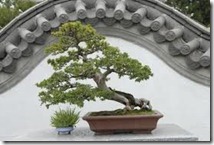 How to Take Care a Bonsai Tree
How to Take Care a Bonsai Tree
Instructions for Taking Care Your Bonsai Trees
Since each bonsai tree species varies in the amount of care and attention, you will need to consider seriously before selecting your bonsai trees.
Still, whichever species you choose means a commitment of your time. If you cannot afford to lose your time and effort to take care of your bonsai tree and water them regularly, then perhaps bonsai tree may not be the right choice for you.
However, taking care of bonsai tree is not all that difficult. You will need to pay attention to 5 important things in caring for your bonsai tree:
a) Light
b) Soil
c) Water
d) Temperature
e) Humidity

These vital elements are necessary to meet the environmental needs of most plants and are important in your bonsai tree care.
Bonsai Tree Care Instruction #1 : Light
Light is the most important factor governing your bonsai trees’ health and care. Photosynthesis of your bonsai trees proceeds at the appropriate rate if your tree is in the amount of light proper for that species to grow.
Too little light will slow down the rate of photosynthesis of your bonsai trees. The lack of nutrients will damage the bonsai tree’s health, affecting production of new growth as well as the nourishment of existing foliage. New growth will be weak and elongated, with greater space between the leaf nodes. The foliage will become larger, as the bonsai plant develops a larger leaf surface to trap more light.
Bonsai trees in too little light use much less water than usual, another sign of poor lighting. Bonsai trees in too little light are easily overwatered, but not if you are checking the bonsai soil first and not simply pouring water into the soil by habit.
Indoor bonsai trees do not usually have the problem of too much light; however if the sun is too strong, the bonsai leaves will burn, becoming scorched across the middle of the bonsai leave surface.
These bonsai leaves will lose their rich green color and become pale green. From too much light the foliage will press down, as though pushing away from light and heat.
Bonsai Tree Care Instruction #2 : Soil
One of the main problems in bonsai tree care is that there are many beginners who are trying to use different types of soil for their bonsai trees. Once of the wisdoms in caring for bonsai trees is that growing four bonsai in four different or unknown types of coil calls for four times the amount of thought and care.
If is often easier to grow and take care your bonsai trees when you use a soil mix that you are familiar with. Knowing which soil mixture your plant is potted in helps take some of the danger out of your bonsai trees.
It is strongly recommended to keep a record of when a bonsai was last potted and the amount of new soil added so you can anticipate root redevelopment.
If you acquire a new specied that requires dryness between waterings, remember that you can add coarse sand for faster draining and dryness.
Bonsai Tree Care Instruction #3 : Water
Japanese bonsai tree masters believe that it takes years to learn to water bonsai trees properly. Unfortunately, your bonsai tree cannot wait years for you to learn this skill, and no one else will be able to give you a useful watering schedule.
Bonsa tree watering is and art that can and must be learned because most plants are lost to overwartering, and many others dry out, usually because their pots are too shallow.
Teach yourself proper watering by learning all you can about the needs of your bonsai, and by seeking out information from other bonsai tree enthusiasts, horticultural societies and even your garden center.
Always water a bonsai plant from the top, as this alllows water to come out through the holes in the bottom of the container. The bonsai plant will receive the water it needs, and soil and chemicals that have built up in the soil will be wahed out of the pot.
Bonsai Tree Care Instruction #4 : Temperature
Some bonsai trees grow in all temperatures but others are much less tolerant. Your bonsai tree selection should be made according to your ability to provide temperatures needed by these species. This is specially important when you grow indoor bonsai trees during the winter. A sunny window is usually fine for subtropical and tropical material.
Bonsai Tree Care Instruction #5 : Humidity
Humidity is an important factor in growing tropical indoor bonsai as well as having a proper bonsai care during the winter. There are various ways to adjust the humidity to improve your plants’ chances of survival:
1) Use a humidifier
2) Mist foliage daily with tepid water
3) Group bonsai trees together
4) Grow trees on a tray or saucer with a layer of stones lining the tray.
In outdoor areas that have heavy dew at night, do not wet the foliage during the evening hours. In dry areas of the country, where some species of plants may prove difficult, rely on local advice.

Deprecated: strpos(): Passing null to parameter #1 ($haystack) of type string is deprecated in /home/agriviek8Qv/agriviet.net/public_html/wp-includes/comment-template.php on line 2522